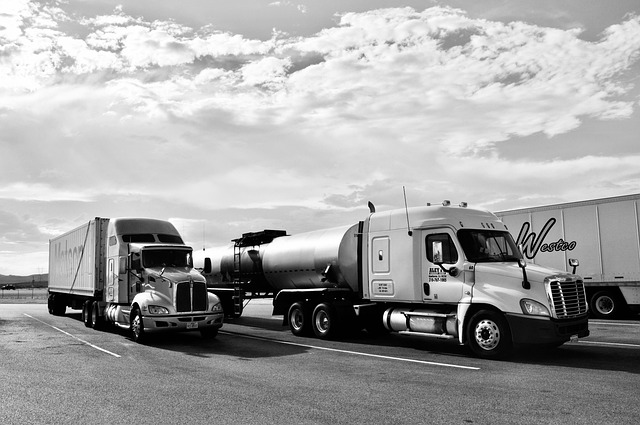Looking to register your car in California? This comprehensive guide breaks down the process step-by-step, ensuring a smooth transition. From understanding key requirements to gathering essential docu…….
Category: ATVs (All-Terrain Vehicles)
ATVs (All-Terrain Vehicles): A Comprehensive Overview
Introduction
In the ever-evolving world of transportation, All-Terrain Vehicles (ATVs) have emerged as versatile and robust machines, capable of navigating diverse terrains with ease. These vehicles, designed for off-road adventures and utility purposes, have captured the imagination of enthusiasts worldwide. This comprehensive article aims to explore every facet of ATVs, from their technical intricacies to their global impact and future prospects. By delving into this fascinating topic, readers will gain valuable insights into how ATVs are shaping industries, leisure activities, and even regulatory frameworks across borders.
Understanding ATVs (All-Terrain Vehicles)
Definition and Key Components
An All-Terrain Vehicle, commonly abbreviated as ATV, is a motorized off-road vehicle designed for various terrain applications. It typically features four large, low-pressure tires, a seat positioned directly above the engine, and handlebars for steering control. The core components of an ATV include:
- Engine: Typically a four-stroke, single or twin-cylinder engine, offering excellent power and efficiency for off-road conditions.
- Transmission: ATVs often employ simple mechanical transmissions with high and low-range gears to tackle different terrain challenges.
- Suspension: Independent suspension systems at each wheel ensure stability and comfort during rough rides, allowing for better control.
- Steering: Handlebars enable precise steering control, crucial for navigating tight turns and uneven terrain.
- Tires: Large, knobby tires with excellent traction are a defining feature, allowing ATVs to traverse mud, sand, rocks, and other obstacles.
Historical Context
The concept of ATVs can be traced back to the 1960s when manufacturers sought to create vehicles capable of performing tasks traditionally done by horses or manual labor. Early models were designed for agricultural use, hunting, and recreational off-roading. Over time, ATV technology evolved significantly, leading to improved performance, safety features, and a growing range of applications. Today, they are widely used in agriculture, construction, search and rescue operations, and as popular recreational vehicles.
Significance and Applications
ATVs play a pivotal role in various sectors:
- Agriculture: They assist farmers in tasks like field maintenance, herd management, and crop harvesting, enhancing efficiency and reducing labor costs.
- Recreation: ATVs offer thrill-seekers an opportunity for outdoor adventures, with off-road trails and racing events attracting enthusiasts globally.
- Search and Rescue: Their rugged design and maneuverability make them invaluable in search and rescue operations, especially in remote or difficult-to-access areas.
- Construction and Forestry: In these industries, ATVs are employed for tasks like site preparation, material handling, and forest maintenance.
Global Impact and Trends
International Influence
The impact of ATVs is not limited to any single region; they have become a global phenomenon with a significant economic and cultural footprint:
- North America: The United States and Canada are among the world’s largest markets for ATVs, with robust off-road communities and extensive networks of trails.
- Europe: European countries like Germany, Italy, and the UK have thriving ATV industries, contributing to their outdoor recreation and agricultural sectors.
- Asia: Countries such as Japan and China are witnessing a surge in ATV popularity, driven by changing leisure trends and expanding utility applications.
- South America and Africa: These regions offer vast off-road landscapes, making ATVs popular for both recreational and work-related purposes.
Key Global Trends
Several global trends are shaping the ATV industry:
- Electric ATVs (eATVs): The rise of electric vehicles is not spared by ATVs, with manufacturers introducing quieter, more eco-friendly eATVs. These offer a sustainable alternative for recreational and utility use.
- Technology Integration: Modern ATVs are increasingly equipped with advanced technology, including GPS, mobile connectivity, and smart safety features like roll-over protection systems (ROPS).
- Personalization and Customization: ATV owners often modify their vehicles to suit specific needs or aesthetics, leading to a vibrant aftermarket industry.
- Off-Road Tourism: Growing interest in off-road experiences has led to the development of ATV tour packages, attracting tourists seeking adventure.
Economic Considerations
Market Dynamics
The global ATV market is characterized by dynamic growth, driven by factors such as:
- Increasing Outdoor Recreation: The rise of outdoor activities and a growing appetite for thrill-seeking adventures fuel ATV sales.
- Agricultural Demand: Developing countries’ expanding agricultural sectors drive demand for versatile ATVs that can handle multiple tasks.
- Technological Advancements: New technologies and improved designs attract consumers, leading to higher sales and market penetration.
Investment Patterns
The ATV industry attracts significant investment from various sources:
- Manufacturers: Major automotive companies and specialized ATV manufacturers invest heavily in research and development to create innovative products.
- Aftermarket Industry: The customization and accessory market is a lucrative sector, with investors focusing on parts, accessories, and customization services.
- Tourism and Recreation: Governments and private entities invest in ATV tour operations, trail development, and related infrastructure.
Economic Impact
ATVs have a substantial economic impact:
| Aspect | Impact |
|---|---|
| Employment: | ATV manufacturing, sales, maintenance, and tourism-related jobs contribute to local economies. |
| Agriculture: | ATVs enhance agricultural productivity, reducing labor costs and increasing farm efficiency. |
| Recreation: | Off-road activities driven by ATV ownership stimulate local tourism and outdoor recreation industries. |
| Export Potential: | Many countries export ATVs, contributing to their trade balances and foreign revenue streams. |
Technological Advancements
Recent Innovations
The ATV industry has witnessed several technological breakthroughs:
- Electric Powertrains: The introduction of electric ATVs offers quieter, cleaner, and more environmentally friendly alternatives to traditional gas-powered models.
- Telematics and Connectivity: Modern ATVs are equipped with GPS tracking, mobile apps, and Bluetooth connectivity, allowing for real-time monitoring, diagnostics, and remote control capabilities.
- Advanced Safety Features: Roll-over protection systems (ROPS), improved brakes, and advanced suspension systems enhance rider safety, making ATVs safer than ever.
- Autonomous Applications: Researchers are exploring the potential of autonomous ATVs for search and rescue, agriculture, and other specialized tasks, promising increased efficiency and reduced operator risk.
Future Potential
Looking ahead, several technological trends will shape the future of ATVs:
- Hybrid Powertrains: Hybrid ATVs combining electric and internal combustion engines offer improved fuel efficiency and extended range.
- Artificial Intelligence (AI): AI can enhance ATV performance, safety, and navigation by optimizing routes, predicting terrain challenges, and improving autonomous operations.
- Material Innovations: Lighter yet stronger materials will enable more agile and efficient ATV designs, improving maneuverability and reducing power requirements.
- Advanced Connectivity: The Internet of Things (IoT) will connect ATVs to a network of sensors and data, enabling remote monitoring, predictive maintenance, and enhanced safety features.
Policy and Regulation
Governing Frameworks
The development and use of ATVs are subject to various policies and regulations worldwide:
- Safety Standards: Many countries have established safety standards for ATVs, including minimum design requirements, testing protocols, and mandatory safety equipment.
- Environmental Regulations: Emission standards and guidelines for off-road vehicles ensure environmental protection, especially in ecologically sensitive areas.
- Licensing and Registration: Some jurisdictions require ATV owners to obtain licenses and register their vehicles, ensuring responsible use and facilitating law enforcement.
- Noise Limits: To address noise pollution concerns, several regions have implemented noise restrictions on ATVs, particularly in residential areas.
Legislative Influence
These policies significantly influence the ATV industry:
- Safety: Stricter safety standards drive innovation, encouraging manufacturers to incorporate advanced safety features like ROPS and improved brakes.
- Environmental Conservation: Environmental regulations prompt developers to create more eco-friendly ATVs, contributing to sustainable practices.
- Consumer Protection: Licensing and registration systems help track sales, ensure product recalls, and protect consumers from counterfeit parts or unsafe vehicles.
- Community Relations: Noise restrictions reflect growing urban concerns, prompting manufacturers to develop quieter models, fostering better community relationships.
Challenges and Criticisms
Main Issues
Despite their popularity and technological advancements, ATVs face several challenges:
- Safety Concerns: Despite improvements, ATV accidents remain a significant issue, with high-speed collisions and rollovers being major causes of injury or death.
- Environmental Impact: Off-road activities can lead to soil erosion, habitat disruption, and noise pollution, especially in fragile ecosystems.
- Access and Trail Management: Growing popularity increases pressure on trails and remote areas, leading to trail closures and land management issues.
- Legal and Regulatory Compliance: Keeping up with changing regulations and ensuring compliance across borders is a challenge for manufacturers and users alike.
Strategies for Overcoming Issues
To address these challenges, several strategies can be employed:
- Enhanced Training and Education: Providing comprehensive safety training for ATV owners and operators can significantly reduce accidents.
- Sustainable Practices: Promoting responsible trail etiquette, habitat conservation, and eco-friendly ATV design encourages a harmonious relationship between ATVs and the environment.
- Trails and Land Management: Developing and maintaining well-marked trails, with appropriate signage and access controls, ensures safe and sustainable use.
- International Cooperation: Harmonizing regulations and sharing best practices globally can facilitate cross-border ATV activities while ensuring safety and environmental protection.
Case Studies: Real-World Applications
1. Search and Rescue Operations in Canada
In remote regions of Canada, where quick response times are crucial for search and rescue (SAR), ATVs play a vital role. The Royal Canadian Mounted Police (RCMP) and other SAR teams use ATVs to access rugged terrain quickly, enabling them to locate missing persons or respond to emergencies. These vehicles’ off-road capabilities and endurance ensure that rescuers can cover vast areas efficiently.
Lessons Learned: Rapid deployment capabilities of ATVs are invaluable in time-sensitive SAR operations. Customized equipment, such as mounted search lights and communication systems, enhances their effectiveness.
2. Agricultural Innovation in Brazil
In Brazil’s agricultural sector, ATVs have revolutionized farm management. Farmers use them for tasks like herd monitoring, field preparation, and crop spraying, replacing labor-intensive methods. This transformation has led to increased productivity and reduced operational costs.
Impact: ATVs have enabled small-scale farmers to compete with larger operations by providing versatile, affordable machinery. Customized attachments allow farmers to adapt ATVs to specific tasks, further enhancing their utility.
3. Eco-Tourism in New Zealand
New Zealand’s stunning landscapes have attracted off-road enthusiasts, leading to the development of eco-tourism packages centered around ATVs. Local tour operators offer guided adventures through pristine forests and along coastlines, showcasing the country’s natural beauty.
Growth and Challenges: This burgeoning industry contributes significantly to local economies but also faces challenges related to trail management and environmental impact. Balancing tourism revenue with conservation efforts is crucial for long-term sustainability.
Future Prospects
Potential Growth Areas
The future of ATVs holds immense potential across various sectors:
- Electric ATV Dominance: Electric ATVs are expected to gain significant market share, driven by environmental concerns and government incentives for cleaner transportation.
- Autonomous Applications: Autonomous ATVs will find use in diverse fields, from precision farming to search and rescue, offering increased efficiency and reduced risk.
- Personalized Experiences: Customization will continue to be a key trend, with ATV owners seeking unique designs, performance upgrades, and specialized equipment.
- Off-Road Tourism Expansion: With growing interest in outdoor adventures, off-road tourism is poised for global expansion, attracting travelers seeking authentic experiences.
Emerging Trends
Several emerging trends will shape the ATV landscape:
- Smart ATVs: Integration of advanced sensors, AI, and connectivity will enable ATVs to adapt to changing conditions, optimize performance, and provide real-time data insights.
- Green Technologies: Sustainable materials, biofuels, and eco-friendly designs will contribute to a greener ATV industry, addressing environmental concerns.
- Holographic Interfaces: The use of augmented reality (AR) and holographic displays in ATVs could enhance driver assistance systems, navigation, and safety features.
- Global Standardization: Harmonizing international regulations will facilitate cross-border ATV activities while ensuring safety and environmental compatibility.
Conclusion: Shaping the Future Off-Road
All-Terrain Vehicles have evolved from simple workhorses to complex machines that cater to diverse needs, from agriculture and recreation to search and rescue and tourism. As technology advances and global trends emerge, the ATV industry is poised for continued growth and innovation. By addressing challenges and harnessing new opportunities, ATVs will continue to shape industries, leisure activities, and international regulatory frameworks.
From the bustling trails of North America to the remote landscapes of Africa, ATVs have become an integral part of off-road culture worldwide. As we look ahead, the future holds promise for quieter, cleaner, more intelligent, and personalized ATV experiences, all while ensuring a harmonious relationship with the environments they traverse.
FAQ Section: Answering Common Questions
Q: Are ATVs safe to operate?
A: While ATVs offer versatility, safety is a concern. Proper training, wearing protective gear, and adhering to safety guidelines are essential to minimize risks. Modern ATVs also come with advanced safety features to enhance rider protection.
Q: How do I choose the right ATV for my needs?
A: Consider your primary use (recreational, agricultural, etc.), terrain type, desired speed, and budget. Test rides and expert advice from dealers can help you make an informed decision.
Q: Are electric ATVs as powerful as their gas-powered counterparts?
A: Electric ATVs deliver impressive power and performance, especially in urban settings due to their quiet operation and zero emissions. They may not match the top speeds of gas ATVs, but they offer a sustainable alternative.
Q: What are the environmental considerations related to ATVs?
A: ATVs can have an environmental impact, particularly in sensitive ecosystems. To minimize this, choose eco-friendly models, practice responsible trail etiquette, and support conservation efforts to ensure sustainable off-road activities.
Q: Can I ride an ATV legally on public roads?
A: Riding ATVs on public roads varies by region. Some places permit it with specific licenses and restrictions, while others prohibit it due to safety concerns and the potential for traffic hazards. Check local laws before attempting to ride on roads.
Register Car: Gather Docs at Your Local DMV (VIN Verifier)
Looking to register your car in California? This comprehensive guide walks you through the process, ensuring a smooth experience. From understanding crucial requirements like necessary documents and t…….
Register Car California: Step-by-Step with VIN Verification
Looking to register your car in California? This comprehensive guide walks you through the entire process, from understanding key requirements to submitting your application. First, grasp the essentia…….
Register Car California: VIN Verifier & Application Guide
Looking to register your car in California? This comprehensive guide walks you through every step, from understanding key requirements to securing your unique vehicle identification number (VIN) using…….
Register Car California: Step-by-Step VIN Verification Guide
Looking to register your car in California? This comprehensive guide walks you through every step, from understanding key requirements to securing your registration. We’ll show you how to gather essen…….
Register Car California: VIN Verification, Document Tips
Looking to register your car in California? This comprehensive guide walks you through every step, ensuring a smooth process. From understanding essential requirements to gathering vital documents and…….
Register Car California: Step-by-Step DMV VIN Verification
Looking to register your car in California? This guide walks you through the entire process, ensuring a smooth experience. From understanding eligibility requirements for car registration to navigatin…….
Register Car California: VIN Verification Step-by-Step Guide
Looking to register your car in California? This guide breaks down the process step-by-step, ensuring you meet all state requirements. From understanding essential documents needed for a successful VI…….
Register Car California: Step-by-Step VIN Verification Guide
Looking to register your car in California? This guide walks you through the entire process, ensuring a smooth experience. First, understand the state’s unique registration requirements for vehicles……..
Register Car California: VIN Verifier for Smooth Process
Registering a car in California involves understanding specific requirements and gathering essential documents. This step-by-step guide walks you through the process, from confirming your vehicle’s id…….









